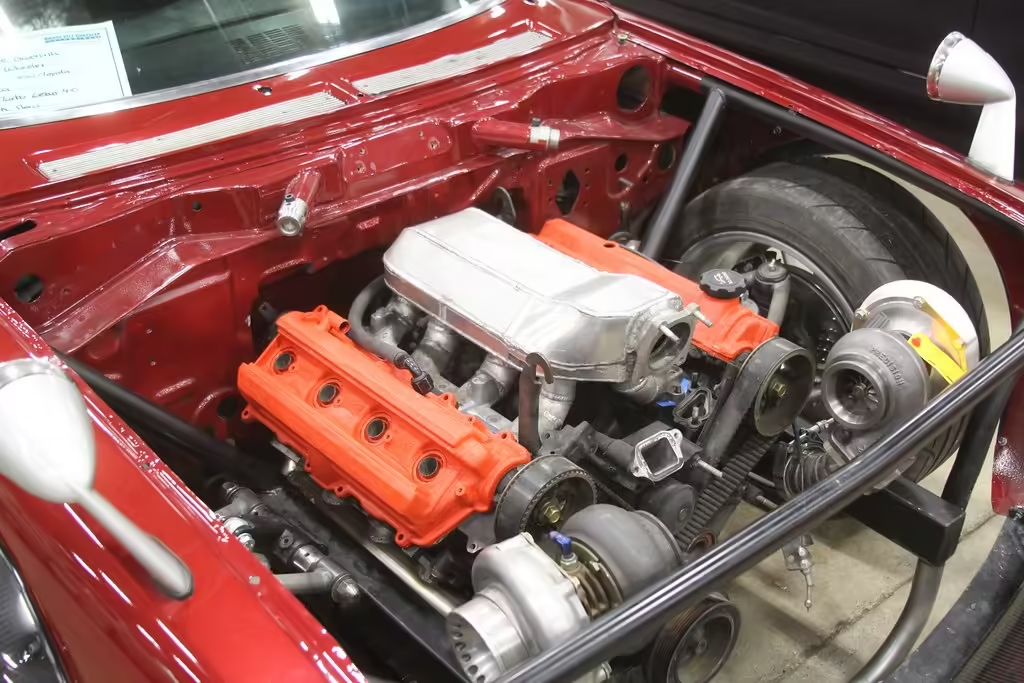
Table of Contents
Three Toyota engines are being developed with greater power and increased efficiency.
According to Toyota Chairman Akio Toyoda, the market share of battery electric vehicles will never exceed thirty percent. In addition, he thinks that the carbon that an internal combustion engine emits is the real danger, not the engine itself. The Japanese automaker’s pursuit of the ICE is not surprising. new family of inline-four engines was announced this week. This is what is currently known about them.
Apart from traditional fossil fuels, they will also run on carbon-neutral fuels including biofuels, synthetic fuels and liquid hydrogen. Three engines in particular were unveiled during Toyota’s joint presentation by Mazda and Subaru. A new 1.5-litre naturally aspirated engine has been introduced, which is around 10% smaller in height and capacity than the current engine. Apart from being stronger it will be more effective. Weight loss of ten percent or so is guaranteed.
Since the four-pot is still in the development stage, exact production and fuel economy data have not yet been made public. Toyota integrated this prototype into the Prius and displayed it alone. The business claims that these new engines will “revolutionise”.car packing” as a result of their smaller footprint. Toyota can increase fuel efficiency by lowering the hood of a car and increasing its aerodynamics by making them smaller.
A 1.5-litre turbocharged engine is another engine under development. Compared to the existing 2.5-litre naturally aspirated model, its capacity will be 20 per cent less. Fifteen percent reduction in height will occur simultaneously. It will have a significant 30% increase in performance and remain just as robust.
The 2.0-litre turbocharged engine will be the most powerful of the lot. The new engine is 10 percent smaller in capacity and 10 percent smaller in height than the current 2.4-liter turbo engine. Toyota promises 30% improved fuel efficiency and more power.
The new engines are tuned for hybrid and plug-in hybrid applications, as one would expect. Inline-Force will debut in electrified vehicles by the end of 2026, according to a person familiar with Toyota’s plans, the Financial Times reported. Interestingly, some engine variants will also run on diesel, according to the FT.
When you think about it, the automobile company’s partnership with Subaru and Mazda makes logical sense. Toyota owns five percent of Mazda and twenty percent of Subaru. Stating that Toyota vehicles are the target market for these new engines. While Mazda is investing more on its rotary engine to act as a powerplant, Subaru is developing a next-generation hybrid system centered around its boxer engine.
In addition to unveiling new engines for “electric-rich” hybrid and plug-in hybrid electric vehicles, Toyota is also looking to establish a fuel supply network that is carbon neutral. To make this happen, Mitsubishi Heavy Industries is collaborating with the country’s largest oil company, Eneos, and Japanese petroleum corporation Idemitsu Kosan. The aim of decarbonisation is to extend the life of the internal combustion engine.
Over the years, Toyota has led the way in vehicle engineering, always coming up with new ideas to boost reliability, efficiency and performance. Toyota has made some significant technological advances in the field of engines, introducing a new generation of engines that aim to reduce pollution while increasing energy and fuel economy.
The new Toyota engines are known in the cutthroat car industry for several key design elements. First and foremost, cost reduction without sacrificing performance is highly valued. This requires the use of modern fuel injection systems and turbocharging to maintain or increase power output while using reduced engine displacement. These developments result in increased fuel efficiency in addition to enhanced acceleration and overall driving characteristics.
READ | Top 5 Single-Engine Airplanes in Popular Demand
READ | Less than 1% of Chevelle Chevys from the 1970s have this unreliable engine.


2 thoughts on “Small but great: the new Toyota engine”